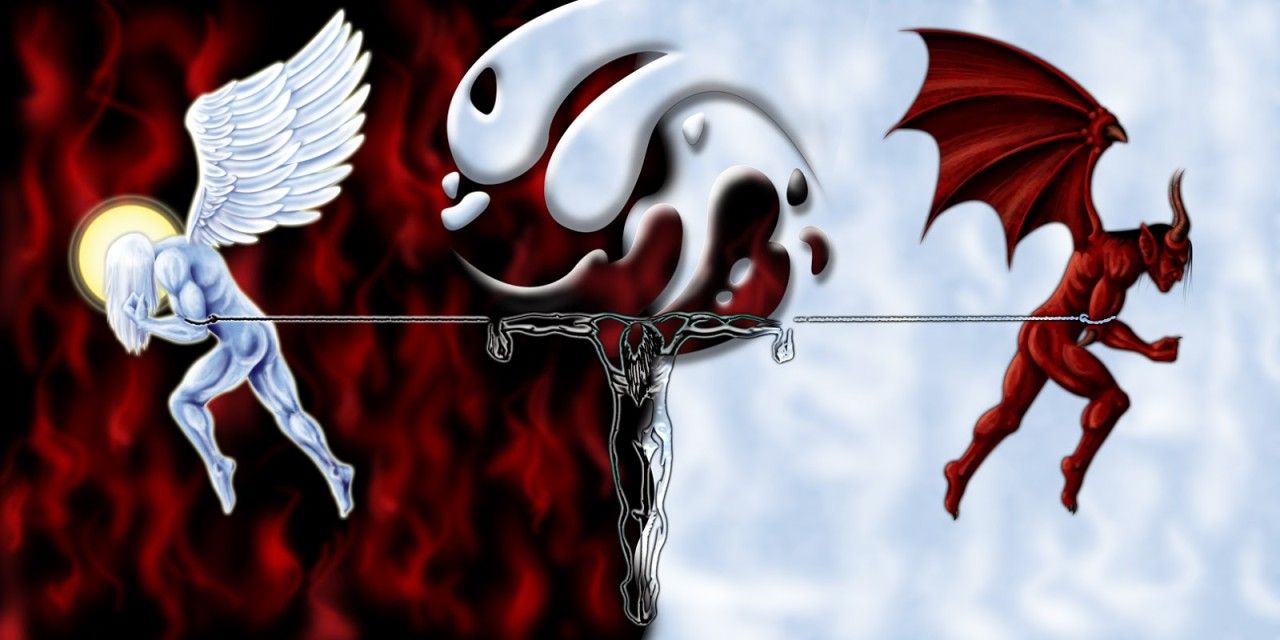
What makes a story about good vs evil so compelling? It's the timeless battle that resonates with everyone. From ancient myths to modern movies, this theme captivates our imagination. Heroes and villains, light and darkness, right and wrong—these elements create tension and excitement. Good vs evil stories often reflect our own struggles and moral dilemmas, making them relatable. They teach lessons about courage, sacrifice, and justice. Whether it's a knight slaying a dragon or a superhero saving the world, these tales inspire us to fight for what's right. Ready to dive into 22 fascinating facts about this classic theme? Let's get started!
Key Takeaways:
- Good vs. evil has been a captivating theme since ancient times, appearing in literature, religion, and pop culture, reflecting human nature and societal values.
- Philosophers and psychologists offer diverse perspectives on the nature of good and evil, exploring the influence of intentions, societal constructs, and environmental factors.
The Age-Old Battle
The struggle between good and evil has fascinated humanity for centuries. Stories, myths, and legends often revolve around this eternal conflict. Here are some intriguing facts about this timeless theme.
- The concept of good vs. evil dates back to ancient civilizations like Mesopotamia and Egypt.
- In many cultures, good is often associated with light, while evil is linked to darkness.
- The Zoroastrian religion, one of the world's oldest, centers on the battle between Ahura Mazda (good) and Angra Mainyu (evil).
- In Christianity, the ultimate battle of good vs. evil is depicted in the Book of Revelation.
- Hinduism portrays the struggle through various avatars of Vishnu fighting demons.
- The yin-yang symbol in Taoism represents the balance of good and evil forces.
Good vs. Evil in Literature
Literature has long explored the themes of good and evil, often using them to reflect societal values and human nature.
- In "Paradise Lost," John Milton explores the fall of Satan and the battle between heaven and hell.
- J.R.R. Tolkien's "The Lord of the Rings" series is a classic tale of good vs. evil, with characters like Sauron representing ultimate evil.
- George Orwell's "1984" delves into the evil of totalitarian regimes and the struggle for individual freedom.
- "Harry Potter" by J.K. Rowling features the fight between Harry and Voldemort, symbolizing good and evil.
- In "To Kill a Mockingbird," Harper Lee examines the moral complexities of good and evil through the lens of racism and justice.
Good vs. Evil in Pop Culture
Pop culture continues to be a rich source of good vs. evil narratives, captivating audiences worldwide.
- Superhero comics like Marvel and DC often depict battles between heroes (good) and villains (evil).
- The "Star Wars" saga is a modern epic of good vs. evil, with the Jedi and Sith representing the two sides.
- Disney movies frequently feature clear distinctions between good and evil characters, such as in "The Lion King" and "Snow White."
- Video games like "The Legend of Zelda" and "Final Fantasy" revolve around the hero's quest to defeat evil forces.
- TV shows like "Breaking Bad" blur the lines between good and evil, exploring the moral ambiguity of characters.
Philosophical Perspectives
Philosophers have long debated the nature of good and evil, offering various interpretations and theories.
- Immanuel Kant believed that good and evil are determined by one's intentions and adherence to moral laws.
- Friedrich Nietzsche argued that traditional notions of good and evil are social constructs used to control people.
- Jean-Paul Sartre posited that humans are free to define their own values, making good and evil subjective.
- Utilitarianism, a philosophy by Jeremy Bentham and John Stuart Mill, suggests that actions are good if they maximize happiness and evil if they cause suffering.
- The concept of the "banality of evil," introduced by Hannah Arendt, suggests that ordinary people can commit evil acts without malicious intent.
Good vs. Evil in Psychology
Psychology offers insights into why people commit good or evil acts, often examining the influence of environment and personality.
- The Stanford prison experiment demonstrated how situational factors can lead ordinary people to commit evil acts.
The Final Showdown
Good vs Evil has always fascinated people. Stories, movies, and even real-life events often revolve around this timeless battle. Good usually represents kindness, honesty, and selflessness. Evil, on the other hand, embodies cruelty, deceit, and selfishness. This struggle isn't just in fiction; it’s in everyday life. We see it in small acts of kindness or cruelty, in big decisions that affect many, and in personal choices that shape our character.
Understanding this dynamic helps us make better choices. It reminds us that our actions matter. Whether it’s standing up for what’s right or helping someone in need, every little bit counts. So, next time you face a moral dilemma, think about the bigger picture. Choose good, because in the end, it’s these choices that define us and shape the world around us.
Frequently Asked Questions
Was this page helpful?
Our commitment to delivering trustworthy and engaging content is at the heart of what we do. Each fact on our site is contributed by real users like you, bringing a wealth of diverse insights and information. To ensure the highest standards of accuracy and reliability, our dedicated editors meticulously review each submission. This process guarantees that the facts we share are not only fascinating but also credible. Trust in our commitment to quality and authenticity as you explore and learn with us.
